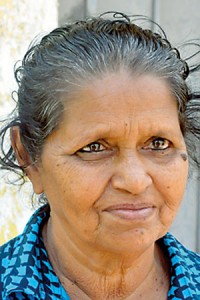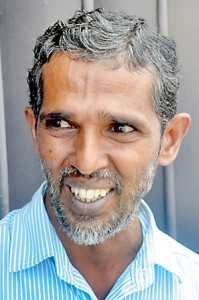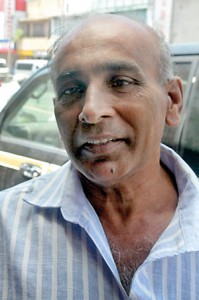News
Rice, vegetables, fish, burn hole in pocket amid cheap political talk
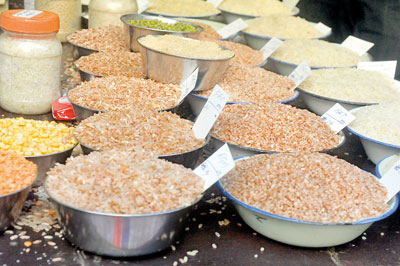
Consumers whether they are in Colombo, Jaffna, Puttalam, Hambantota or Kandy complain that prices of essential commodities have rocketed in the past three months, with no sign of relief.Pix by Athula Devapriya
In the biggest markets of the country, prices of our staple food, many vegetables, fish and meat, and spices have galloped away, doubling in some cases this month compared with the same month of last year. This has been the case even in the past three months.
Politicians and the consumer watchdog are putting on a public stage show, promising imports and dubious import tax reductions, and by visiting markets.
Inflation has risen to 5.5 per cent in January from 4.5 per cent in December, oil prices have been climbing, and the rupee is steadily falling against the US dollar, raising import costs. Core inflation is 7 per cent. The rupee depreciated by 3.8 per cent against the US dollar last year and fell further so far this year by 0.5 per cent.
Prices of red rice alone, have bounced by 35 percent a kilo this month compared with the same month of last year.
Within a month, from December to January, the price of a kilo of tomato has jumped by 40 percent.
Consumers whether they are in Colombo, Jaffna, Puttalam, Hambantota or Kandy complain that prices of essential commodities have rocketed in the past three months, with no sign of relief.
The price of rice is among the most worrisome. But traders are unmoved.
“We cannot sell rice stocks at prices announced by the government as we have paid higher prices to buy them. You will have to ask the government for cheap rice,” an angry trader from Pettah said.
Rice trader Ananda Nawam, 57, said imported rice is costlier than what the Sirisena-Wickremesinghe government expects it to be sold.
He said nadu would be purchased at Rs 90 per kilo, but traders are expected to sell at Rs 72 per kilo according to the Consumer Affairs Authority. “The trade needs to sell it at least Rs 100 to make a profit.”
He said other imports including dhal and green gram are costly due to the exchange rate, where the US dollar is now more than Rs 150. “We are forced to purchase food stocks at different prices each day due to the fluctuating dollar and in turn the prices go up as transport cost too is increasing,” he said.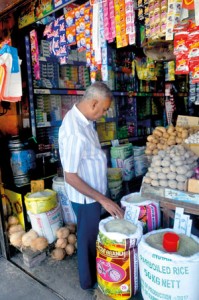
M. S. M. Nawaz, a rice merchant active in the Maradana market for 35 years, said rice sells for between Rs 100 and Rs 140, while imported rice is sold at between Rs 80 and Rs 90.
He said nadu has been set at Rs 68, but traders are forced to buy from wholesalers at Rs 72.
The Consumer Affairs Authority is unable to impose price controls dictated by the Finance Ministry.
In markets in Pettah, Maradana, Borella, and Kirulapone as well as those out of the Western Province traders display different price tags for various types of rice with names such as ‘supiri (superior) samba’ ‘vishesha (special) samba or ‘aluth rata hal (new imported rice). They do not sell the rice at the displayed prices.
A housewife from Maradana, EA Ramani, said the rice prices were high. “We feel it may be better to eat boiled vegetables,” she said adding, she buys cheap vegetables to save money.
Poultry products, fish, dried fish and beef prices have also been rising over the past three months. (See Graphic)
Coconuts and coconut oil prices are skyrocketing. A coconut now sells at Rs 70 to Rs 80 as against Rs 45 to Rs 50 three months back. The price of a coconut oil bottle has jumped by Rs 40 to 50 in three months.
Grocery retailer Mohomad Alli Mohomad said the most striking increase was in coconut prices. “We are virtually forced to sell coconut at the same prices we get from the wholesale market,” he said. “Coconut oil prices have also risen, now a bottle of coconut is sold for Rs 300 from Rs 240 earlier.”
He said the drought has badly affected the crop.
The past president of the Coconut Grower’s Association of Sri Lanka, J. V. R. Dias told the Sunday Times that water was badly needed. “We have written to the government asking that they provide water through the Irrigation Department to ensure that the crop can be sustained.”
The Sunday Times investigations reveal that transport costs were also worsening the price increases.
Despite greater availability of some vegetables, the prices in the retail markets are relatively high. In Nuwara Eliya, cabbage prices have dropped to Rs 4 per kilogram, but in the Colombo a kilo sells at between Rs 45 and Rs 50.

All these have hit the humble packed lunch that millions of workers depend on.
Most vendors now include mango, jak, manioc and other cheaper options for the meals they cook and there is little rice in the packet.
“We have to use various ways to keep our costs low. One way is to reduce the rice quantity,” Jagath Siriwardena said.
The pol sambal offered by most string hopper sellers is no longer available.
Dhammika Mohottige, a seller at the fish market near Maradana said: “Fish is very expensive. Linna costs Rs 800 per kilo while a kilo of tuna (kelawalla) is Rs 1,000.’’
Homemakers are fuming at the toothless, incompetent Consumer Affairs Authority.
CAA officials this week accompanied the Minister of Industry and Commerce, Rishad Bathiudeen, to markets in Pettah, carrying out inspections for public show.
The CAA Chairman, Hasitha Thilakaratna, and Director General, D Jeewanandan, were not available to comment. Messages left at their offices drew no responses.
However, a spokesman for Bathiudeen claimed action was being taken against retailers who defy price controls. He asked consumers to report vendors to the consumer hotline 1977.
A press release issued by ministry quoted Bathiudeen as saying: “There is no shortage of rice in the market as speculated.”
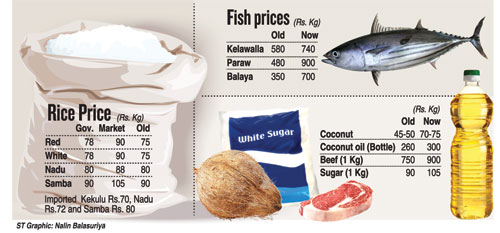
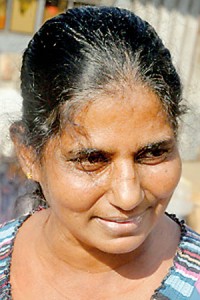
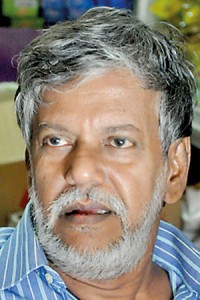
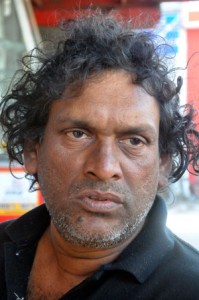
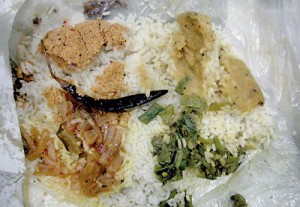
With coconut prices soaring the pol sambal in lunch packs has reduced in quantity
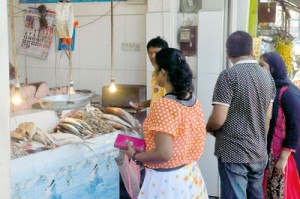
Linna costs Rs 800 per kilo while a kilo of tuna (kelawalla) is Rs 1,000
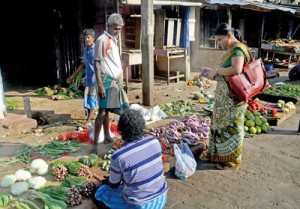
Despite greater availability of some vegetables, the prices in the retail markets are relatively high
| Blame it on the drought, millers, says officialCommenting on the high price of essential food commodities Duminda Priyadarshana, Head of Marketing Food Policy and the Agri-Business Division at the Hector Kobbekaduwa Agrarian Research and Training Institute (ARTI) said the country faced a severe drought during the past few months which has resulted in higher prices.In comparison to prices prevailing at the same time last year, there has been a sharp escalation in prices he said. He noted the price of red raw rice had increased by as much as 48%, while the price of all other local varieties of rice had increased by between 3% to 43% he said. Mr. Priyadarshana added that during the last maha season (Nov/Dec) due to a chronic shortage of drinking water in those areas, only a very limited amount of water from the irrigation tanks were released for agricultural purposes. As a result the harvest was small and insufficient to meet the usual monthly consumption of around 200,000 metric tonnes. He added however that the low yield could not be blamed for the current shortage of rice in the market as there was a buffer stock from last year’s production and the recently imported varieties of rice should have reached the market as well. He said he believed mill owners were responsible for the shortage as they had not released stocks in a timely manner. “Normally the price of rice should be twice the price of paddy” he said. “If a price discrepancy occurs between these two it might be an artificial hike,” he said. He said the price of rice would be reduced prior to the Sinhala and Tamil New Year festival. Commenting on the price of vegetables, he said vegetable prices were a bit lower than usual as the drought-affected paddy lands had been cultivated with vegetables resulting in a production glut. The dramatic rise in the price of coconut was also a result of adverse climatic conditions according to Priyadarshana. He said he expected prices of this commodity too to fall by April. In a similar manner the prices of many varieties of fruit too had increased. He said a report published by the Institute revealed a 139% rise in the cost of sour plantains Mr. Priyadharshana emphasised scientific crop cultivation was the only way to reduce price fluctuation. He claimed the ARTI had significantly reduced spikes in price fluctuation over a 10 – 15 year period in this manner. |
| The lament of the publicA cross section of consumers express their views on the cost of living.H.A. Somawathi (Kiribathgoda). A tea maker in a canteen in Maradana: “ It’s very difficult to live these days… prices are rising. The price of rice is beyond our means, we can’t afford to buy it. Vendors display boards quoting low prices at sales outlets, but at the sales point demand sky-high prices.”
Mohammad Nazim, a worker at a gem mine in Ratnapura: “The government keeps introducing new taxes daily, as they wish. “I think we pay more for the taxes than for the price of food. The poor are the victims of all the tax hikes. We are facing severe economic hardship as a result. I have noticed that low-priced food items in Ratnapura is sold at exorbitant prices in Colombo. I don’t know why such things happen.”
E.A. Ramani, a house wife, from Maradana: “Only veges like leeks, cabbage, brinjal and beet root are affordable. According to media reports, there is a glut in vegetable production in Nuwara Eliya and they are being used to make compost. “But here the situation is heart-breaking. I think third party involvement in the vegetable distribution system should totally be stopped. ” N. Ramesh Samantha , 49, a furniture polisher from Pettah: “There are only a very few affordable items available in any eatery. We can’t make meals at home either. The sky rocketing cost of coconuts is beyond our reach. Soon the price of a coconut will exceed Rs 100. Even a small nut costs around Rs 80. Being the sole bread-winner in the family makes it is very difficult to manage day-to-day expenses.”
M. Nayim running an optical business: “The Government should be stern and impose maximum retail prices for every commodity. When we were young during 1960-70 era, then governments maintained fixed prices at constant levels. But today it seems that the black marketers have become more powerful than the government”
Damith Thilakarathna, an employee in a private company from Warakapola: “I’m from Warakapola. I don’t know whether the shop keepers are aware of the gazetted prices. I bought Keeri Samba yesterday from my home town and it was Rs.130. See now, I just bought two bags of vegetables from Pettah but that cost more than Rs. 1,000. We are compelled to always spend Rs 1000 – Rs. 2000 when go to the market. ” |


